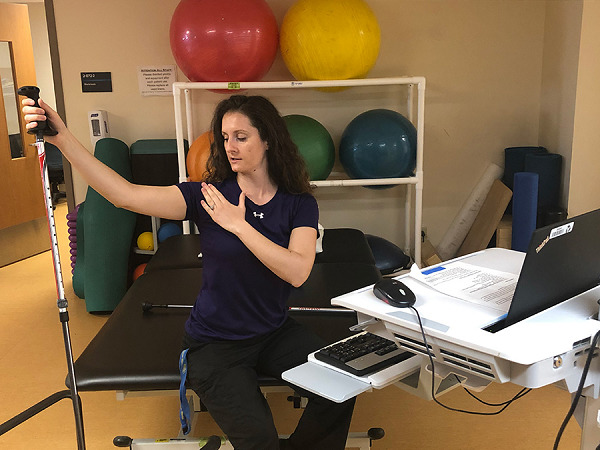A team of researchers and clinicians at Toronto Rehab has launched the second edition of their Telerehabilitation Toolkit, marking UHN’s continued dedication to enhancing virtual care worldwide.
Toronto Rehab’s Brain Rehab Program and UHN’s KITE Research Institute launched Version 2.0 of the toolkit last month after receiving feedback from users to help tailor the original version.
The new edition includes 12 new patient-facing and clinician-facing videos of different telerehab scenarios in action.
“We created these videos because we know that the present and future of rehabilitative care means that organizations and providers rely more heavily on technology to support their patients,” says Dr. Meiqi Guo, Medical Director, Brain Program, Toronto Rehab.
“These videos will help inform patients and clinicians more holistically about how to improve, evaluate and participate in telerehab, an area that has seen increased demand since the onset of COVID.”
The videos, which can be accessed on YouTube, include topics from assessing balance and mobility in telerehab, choosing in-person or hybrid approaches to rehab, and preparing for your first telerehab session as a patient.
The team launched the first edition of the Telerehabilitation Toolkit in the fall of 2020, shortly after the onset COVID-19 pandemic, and it was widely downloaded across Canada and around the world.
But the impact of the toolkit goes far beyond the pandemic, as telerehab has since become a staple in rehabilitative care.
The toolkit set itself apart from similar initiatives by also including hands-on resources such as telerehab patient safety checklists, measures of balance and mobility that can be administered virtually and patient handouts on preparing for telerehab. It is available to rehab centres worldwide at no cost.
“The Telerehabilitation Toolkit reflects our heartfelt intention to remove as many barriers as possible, to delivering safe, efficient, and patient-centred rehabilitation,” says Dr. McKyla McIntyre, physiatrist at Toronto Rehab and a member of the development team.
“We continue to welcome user feedback to better help rehabilitation organizations and providers implement, improve, and evaluate virtual rehabilitation worldwide.”
This article was submitted by UHN News.




